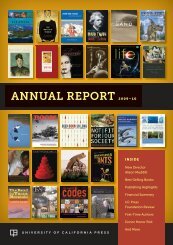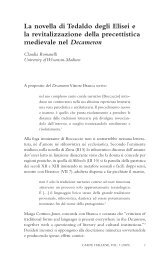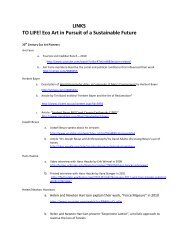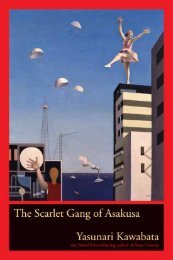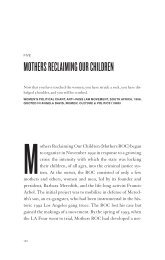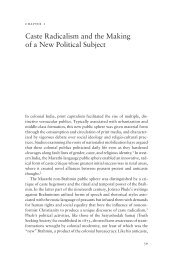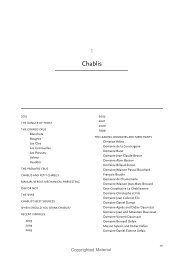Read Chapter 1 (PDF) - University of California Press
Read Chapter 1 (PDF) - University of California Press
Read Chapter 1 (PDF) - University of California Press
Create successful ePaper yourself
Turn your PDF publications into a flip-book with our unique Google optimized e-Paper software.
east harlem 11<br />
Frederick Douglass Avenues. It was and is a socioeconomic revolution<br />
that spread to Central Harlem’s housing market and produced what some<br />
have called a second Harlem Renaissance. Unfortunately, for many, it has<br />
meant an erosion <strong>of</strong> African American influence over an eerily familiar<br />
frenzy <strong>of</strong> real estate speculation.<br />
On the other side <strong>of</strong> Fifth Avenue, the East Harlem side <strong>of</strong> 125th Street,<br />
this trend is visible in the changing face <strong>of</strong> the built environment. The<br />
Metro North station at 125th Street, where the railway makes its last stop<br />
in Manhattan before heading out <strong>of</strong> the city, is a renovated art deco homage<br />
to the economic changes. One block east, a behemoth Pathmark<br />
supermarket caters to every need, leaving the bodegas and 99-cent stores<br />
to wither and fade, and a shiny new <strong>of</strong>fice complex waits in joyful hope<br />
that commuters will find the 125th Street station as convenient as Grand<br />
Central.<br />
From 96th Street to 125th, Fifth Avenue to the East River, East Harlem<br />
block by block, bodega to liquor store, tenement to project. From the<br />
transformation at 96th to the transformation at 125th, the neighborhood<br />
is a study in contrasts, an assault on the senses that is unrelenting and<br />
always changing.<br />
. . . and person by person<br />
East Harlem cast in concrete is only half the story. Running alongside and<br />
<strong>of</strong>ten counter to it is the other half, the flesh and bone that has inhabited<br />
this rectangle <strong>of</strong> urban space day after day for the past few centuries.<br />
Inasmuch as this book is the story <strong>of</strong> those streets, it is also the story <strong>of</strong><br />
these people. Moving in and out, over and under the sulking buildings<br />
and sagging sidewalks, the tenants <strong>of</strong> East Harlem have carved a life<br />
from this place, a life for themselves and for their neighbors.<br />
Dividing up the streets into micro-communities, residents have long<br />
dug in and held fast to their corner <strong>of</strong> the neighborhood, filling each<br />
niche with the social clubs and restaurants, murals and flags that defend<br />
the claims <strong>of</strong> Italians against Puerto Ricans, <strong>of</strong> Puerto Ricans against<br />
Mexicans, <strong>of</strong> old-timers against newcomers. The streets, <strong>of</strong> course, know



